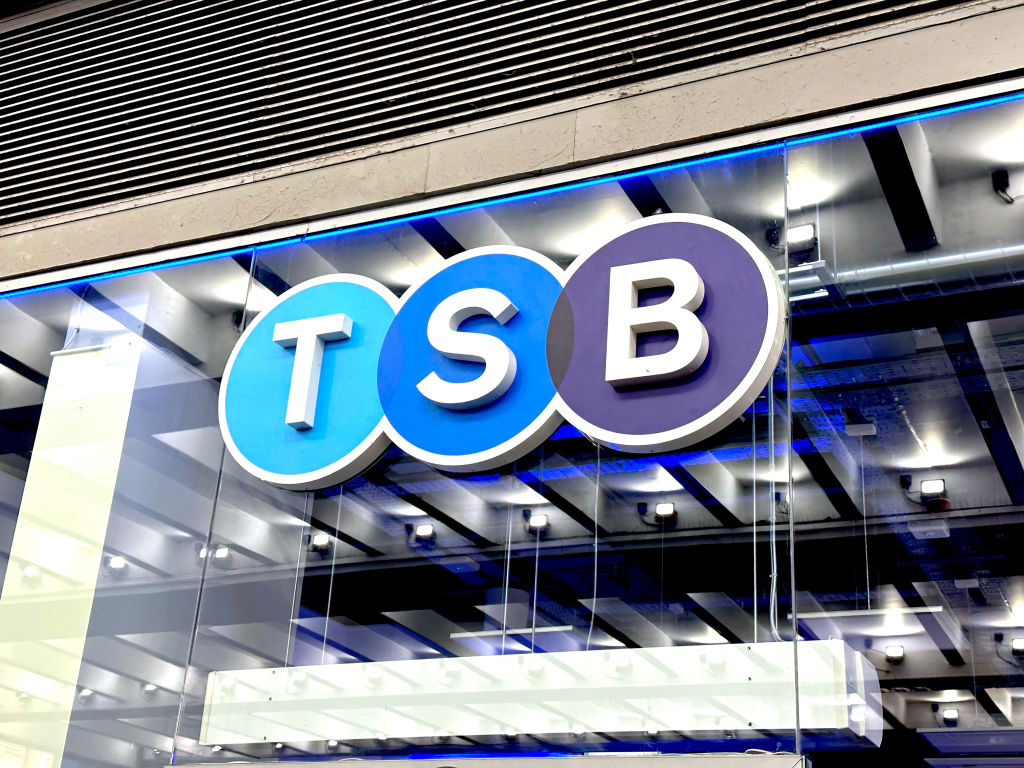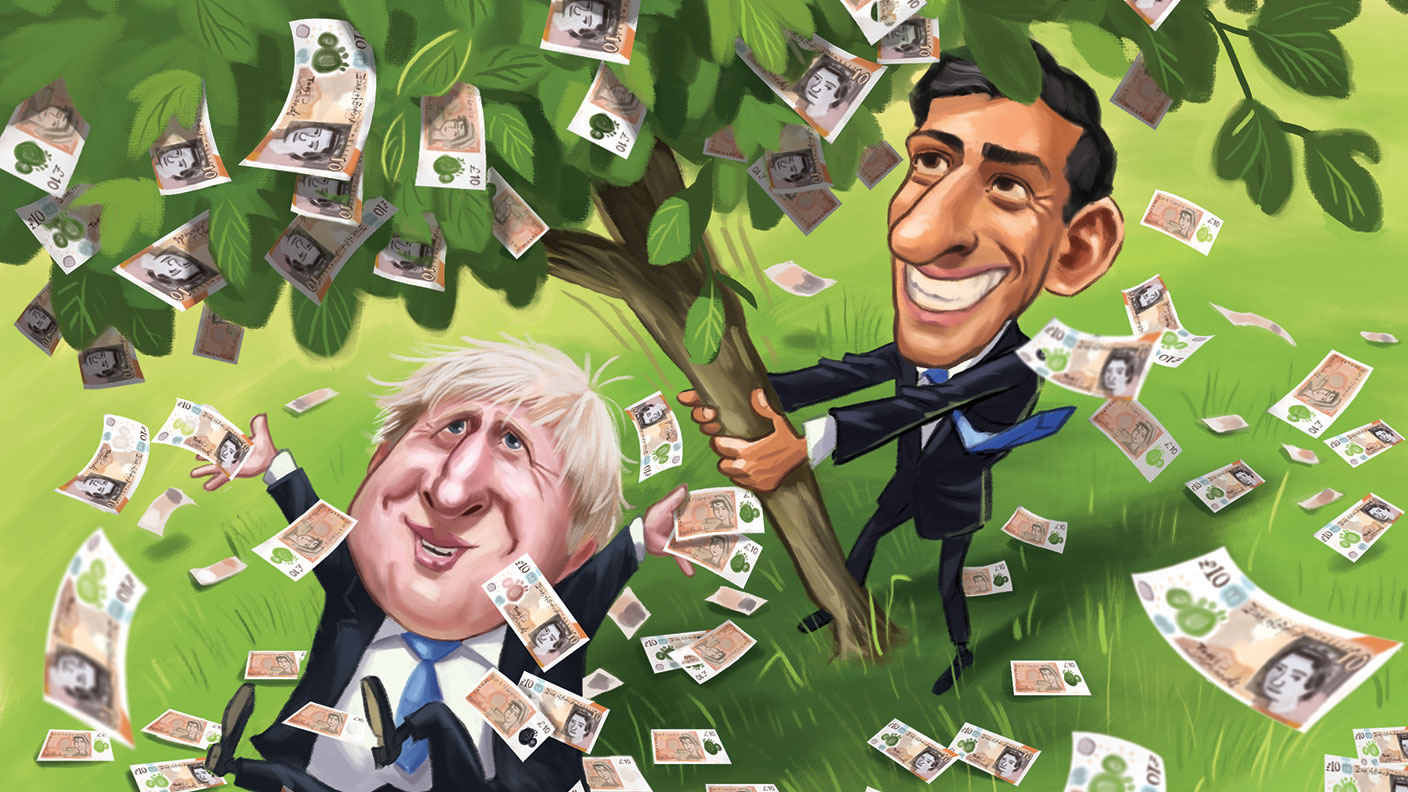Are soaring CEO salaries a burden on business?
Executive pay has been rocketing for decades, exciting the envy of wage slaves. But should investors avoid or opt for stocks helmed by well-rewarded executives, asks Richard Beddard.


Executive pay has been rocketing for decades, exciting the envy of wage slaves. But should investors avoid or opt for stocks helmed by well-rewarded executives, asks Richard Beddard.
First it was the company car, then it was share options and now it's the "Long-Term Incentive Plan". For decades, companies have been finding ways to pay executives more money they have to, they say, in order to attract the best people for the top jobs.
The headlines usually focus on the obvious outliers such as WPP's chief executive, Sir Martin Sorrell, who earned £70m in 2015, up from £43m in 2014. But while Sorrell is an extreme case, pay for CEOs in general has been soaring for decades now. The High Pay Centre think-tank says that the gap between CEOs' pay and that of the average worker has tripled since the late 1990s. Back then, the average FTSE 100 CEO earned about 50 times the salary of their average employee. Today, as average CEO pay nears £6m, the multiple is about 150.
Subscribe to MoneyWeek
Subscribe to MoneyWeek today and get your first six magazine issues absolutely FREE

Sign up to Money Morning
Don't miss the latest investment and personal finances news, market analysis, plus money-saving tips with our free twice-daily newsletter
Don't miss the latest investment and personal finances news, market analysis, plus money-saving tips with our free twice-daily newsletter
As a wage earner, you might find this galling.But as an investor, does it matter? After all, if a CEO makes good money for the shareholders, then you could argue that they are worth every penny they get. Yet this is precisely where the argument runs into trouble. The link between high executive pay and corporate performance is in fact extremely tenuous.
Just like employees, shareholders have not shared equally in the bonanza enjoyed by CEOs over the last few decades. The Total Shareholder Return (TSR) which includes reinvested dividends on the FTSE 350 index grew by 54% between 2000 and 2013. Total CEO remuneration at FTSE 350 firms more than tripled over the same period.
Some evidence shows that high pay may even hold businesses and shareholder returns back. In July, index provider MSCI published a study, looking at executive pay and corporate performance at large US firms between 2006 and 2015. MSCI found that, generally speaking, the more a company paid its CEO, the less well it did. Companies that paid the least (those within the bottom 20%, or quintile, for their industry) delivered a 39% higher TSR over ten years than those in the top quintile for CEO pay.
When a bonus is bad news
So what's going on? Long-term incentive pay arrangements, ostensibly designed to improve performance over the long run, typically account for more than 70% of total CEO pay. However, while in theory, it might seem to make sense to link CEO pay to corporate performance, in practice it doesn't seem to be working. It might be that the performance targets are far too easy to achieve, and thus reward relative failure. Or, more insidiously, it may be that performance-related pay is backfiring because the incentives are wrong.
Research shows that bonuses can help to motivate people to work harder in dull, repetitive jobs, where output can be easily measured. But paying for performance is uncommon in high-powered roles. Cabinet ministers, judges and surgeons, for example whose decisions are rarely made in isolation, and which have consequences years or even decades into the future are not paid based on performance. Yet a CEO's pay is tightly linked to the performance of the company they lead, even though there are many factors over which the CEO has little or no control, such as the state of the economy.
The dangers of short-termism
Moreover, when it comes to incentive pay, the "long term" is often a lot shorter than most of us would imagine. A typical so-called Long-Term Incentive Plan (LTIP) links pay to performance over three-year periods. TSR, or a combination of TSR and earnings per share (EPS a measure of corporate profit), is used as the performance measure. From a shareholder perspective, TSR should be a good benchmark. Shareholders are rewarded in two ways: via dividend income, and in capital gains when they sell.
The TSR embraces both of these, so companies that increase TSR over the long term will make good investments. But TSR is pernicious over short durations (such as three-year periods), because it encourages bosses to boost profitability and thus the share price using short-term measures or financial engineering, at the expense of long-term prosperity.
For example, it might take ten years for a pharmaceutical group to develop a novel drug. While it does so, profitability will be reduced asit bears the cost of research and development.So it makes financial sense for executives on annual bonuses and three-year incentive plans to be less innovative. By reducing investment, and using the funds released to buy back shares, raise the dividend, or buy new businesses, they can inflate TSR quickly.
This short-termism is at its most dangerous when borrowing is used to fund the dividends, buybacks and takeovers, and profits start to fall due to underinvestment in the business. Growing interest payments gobble up more and more of the company's resources, eventually forcing it to cut dividends, issue more shares, or sell business units to raise funds, reversing earlier short-termism. Making a comeback will be harder if the firm has lost ground to rivals who invested for the long term.
This is not just theory. In 2012, economist John Kay argued inthe government-backed Kay Review that short-termist policies, driven partly by this performance-related pay culture, have seen the decline of industrial giants GEC and ICI, the failure of pharmaceutical giants GlaxoSmithKline and AstraZeneca to maintain strong pipelines of new drugs, and the collapse of big banks RBS and HBOS, during the financial crisis.
How did we get here?
If high pay is good for no one but CEOs themselves, then how have we ended up here? It's partly because CEOs negotiate their own pay and effectively set the level for other board members. But their negotiations are made far easier by the fact that no one involved in setting their pay has any real incentive to exercise restraint.
At most firms, remuneration committees decide what to pay executives but their members are appointed by the board, and can be highly paid executives at other firms. They employ remuneration consultants who compare the company's pay with the wage bill of its peers. This creates an imperative to outbid them, resulting in spiralling pay awards.
Fully listed companies must put their remuneration policies to a binding vote every three years, but usually the only shareholders with enough votes to make a difference are fund managers, and they rarely vote them down. Why would they? They are part of the high pay club too, and see little wrong with it. In any case, they frequently outsource voting to proxy voting companies, who may also advisethe companies they are voting on.
There is a range of views on how to improve things. The government has this week launched a consultation on corporate governance reform, and how to address concerns around executive pay specifically more effectively.
The High Pay Centre thinks that companies should be forced to publish the pay gap between a CEO and their staff, with the hope that this would shame them into showing restraint. It also proposes an annual binding shareholder vote on pay, and would like to replace the remuneration committee with a shareholder committee made up of the five largest shareholders and a non-voting employee.
As for the sorts of compensation packages we should want to see ShareSoc, the UK Individual Shareholders Society, publishes guidelines for companies and shareholders. It reckons that average pay at larger firms needs to be cut by more than half from current levels. ShareSoc would also in most cases cap annual bonuses at a maximum of 100% of salary, while annual awards under LTIPs would also be restricted to 100% of salary.
For smaller companies, ShareSoc recommends salaries be no more than the median of companies earning similar revenues. That currently equates to between £150,000 and £350,000 for companies with sales of £250m. In smaller companies, bonuses should once again be no more than 100% of salary. Complex LTIPs should be avoided in favour of share option schemes that require a "meaningful portion" of the shares to be held until the CEO leaves the firm. The Kay Review recommended all executive bonuses be paid in shares held significantly beyond the executive's tenure. The point is to simplify pay packets and to encourage top executives to act more like owners, by giving them a stake in the company that they must hold through thick and thin.
Saying how executives should be rewarded is one thing measuring performance is another. Growing pay complexity has resulted in inscrutable remuneration reports, running into dozens of pages for companies on the main market. Those on Aim don't even have to reveal performance conditions attached to share options or LTIPs, and often bury terse statements on pay in the notes to the accounts.
Avoiding the pay pitfalls
So if badly structured CEO pay packets are a burden for businesses, how do you avoid investing in such companies? There are three sensible rules of thumb. Firstly, be sceptical if remuneration is too complex to understand, let alone value. Secondly, compare a CEO's pay to the value of the shareholdings he or she owns you want the company to be run by someone with plenty of "skin in the game". Finally, favour companies that show restraint, through below-average salaries and bonuses.
The poster child for pay restraint is Aim-listed Quartix, which makes tracking devices for vans. These allow businesses to send the closest available vehicle to a job, and fleet owners to check that drivers are driving safely. It's a highly profitable, fast-growing business with a focused direct sales operation, yet managing director and founder Andrew Walters took a salary of just £81,961 in 2015, and Quartix pays him no bonus, benefits or options.
Instead, Walters retains nearly 18 million shares, worth nearly £64m 780 times his annual pay. As a CEO, he receives modest remuneration, but as Quartix's biggest shareholder, he earned almost £1m in dividends in 2015. Clearly, he's much more likely to be interested in the health of the business, than in milking it for a higher salary. Such probity rarely comes cheap, and Quartix trades at 33-times debt-adjusted earnings. Below we look at four stocks helmed by CEOs with large shareholdings relativeto their salary, which are more reasonably valued.
Four good firms with sensible pay structures
Science (Aim: SAG)
Market cap: £57mDebt-adjusted price/earnings ratio: 14
Martyn Ratcliffe's £275,000 salary isslightly above the median for a companyearning annual revenues of £31m, but itrewards two roles he's both CEO andexecutive chairman of Science. Science'sannual report reveals only one otherremuneration item in 2015. It paid him£50,000, 18% of basic pay, for extra timespent integrating the company's recentacquisitions. Ratcliffe was appointed in2010 when he bought a substantial stakein Science and while it was developinga sharper commercial focus that hastransformed profitability.
Today, heowns 33% of the company, a stake worthnearly 70 times his pay. Acquisitions canbe a sign of short-termism, but Scienceis probably motivated by long-term value buying other consultancies is a cheapway of recruiting scientists from lesscommercially adept consultancies.
Next (LSE: NXT)
Market cap: £7.5bnDebt-adjusted price/earnings ratio: 12
High-street fashion chain Next sits inthe middle of the FTSE 100. CEO LordWolfson earned £4.7m in the year toJanuary 2016, including bonuses andincentives. That's more than the £4mmedian for FTSE 100 firms. However, hereceived his maximum bonus and morethan 75% of his LTIP maximum. Whilea maximum bonus of 150% may seemhigh, it isn't by FTSE 100 standards, andWolfson receives any amount paid outover 100% in shares.
Although 2016 maynot match 2015, Next's profitability hasbeen high and stable for over a decade. And unlike many of its FTSE 100 peers,shareholders have enjoyed the benefitstoo Next's TSR has grown substantiallyfaster than its CEO's pay. Lord Wolfson's1% stake in the company is worth about£74m, almost 15 times what he earned.
XP Power (LSE: XPP)
Market cap: £330mDebt-adjusted price/earnings ratio: 17
XP Power makes power converters thatare typically installed in medical andindustrial equipment. It was a profitabledistributor before it started designingand then manufacturing its convertersabout a decade ago. Now, with morecontrol over the product it sells and salesoffices around the world, it's a highlyprofitable manufacturer.
The firm isstill chaired by its founder, a substantial shareholder, while CEO Duncan Pennyjoined in 2000. His stake of nearly 2%is worth almost £6m, compared withhis basic salary of £260,000, belowthe median for a firm with revenues of£110m. He receives a bonus and share options, capped at 100% of salary.
Castings (LSE: CGS)
Market cap: £182mDebt-adjusted price/earnings ratio: 9
Castings makes van and truck parts, andis working through one of its periodiccontractions. Recent half-year results show that profit fell by 25% comparedwith the same period last year, due to theending of a major contract, the cost oftooling up for new work that has yet tostart and reduced demand. But while itoperates in capricious markets, Castingshas a history of prudent investment andlong-term growth, so it should bounceback.
CEO David Gawthorpe is leavingin January, but his successor AdamVicary, an internal promotion, is unlikelyto deviate far from the company'sremuneration policy. Gawthorpe's salaryin the year to March 2016 was £250,000,below the median for similar companies.He received a bonus of 40% of salary inthe year to March 2016.
Get the latest financial news, insights and expert analysis from our award-winning MoneyWeek team, to help you understand what really matters when it comes to your finances.
Richard Beddard founded an investment club before joining Interactive Investor as an editor at the height of the dotcom boom in 1999. in 2007 he started the Share Sleuth column for Money Observer magazine, which tracks a virtual portfolio of shares selected for the long-term by Richard. His career highlights include interviewing Nobel prize winners, private investors and many, many company executives.
Richard is freelance writer who invests in company shares and funds through his self-invested personal pension. He has worked as a teacher and in educational publishing, and is a governor at University Technology College, Cambridge. He supports the Livingstone Tanzania Trust, a charity supporting education and enterprise in Tanzania.
Richard studied International History and Politics at the University of Leeds, winning the Drummond-Wolff Prize for "distinguished work in the field of international relations".
-
 Is property investment still as safe as houses? Why golden era could be over
Is property investment still as safe as houses? Why golden era could be overThe golden era of property is over and investors are better off in the stock market, new research suggests
-
 What Santander’s takeover of TSB means for customers
What Santander’s takeover of TSB means for customersSantander is set to buy rival TSB for £2.65 billion. What does it mean for customers, and could we see the TSB brand disappear from the high street?
-
 Why Australia’s luck is set to run out
Why Australia’s luck is set to run outCover Story A low-quality election campaign in Australia has produced a government with no clear strategy. That’s bad news in an increasingly difficult geopolitical environment, says Philip Pilkington
-
 Why new technology is the future of the construction industry
Why new technology is the future of the construction industryCover Story The construction industry faces many challenges. New technologies from augmented reality and digitisation to exoskeletons and robotics can help solve them. Matthew Partridge reports.
-
 UBI which was once unthinkable is being rolled out around the world. What's going on?
UBI which was once unthinkable is being rolled out around the world. What's going on?Cover Story Universal basic income, the idea that everyone should be paid a liveable income by the state, no strings attached, was once for the birds. Now it seems it’s on the brink of being rolled out, says Stuart Watkins.
-
 Inflation is here to stay: it’s time to protect your portfolio
Inflation is here to stay: it’s time to protect your portfolioCover Story Unlike in 2008, widespread money printing and government spending are pushing up prices. Central banks can’t raise interest rates because the world can’t afford it, says John Stepek. Here’s what happens next
-
 Will Biden’s stimulus package fuel global inflation – and how can you protect your wealth?
Will Biden’s stimulus package fuel global inflation – and how can you protect your wealth?Cover Story Joe Biden’s latest stimulus package threatens to fuel inflation around the globe. What should investors do?
-
 What the race for the White House means for your money
What the race for the White House means for your moneyCover Story American voters are about to decide whether Donald Trump or Joe Biden will take the oath of office on 20 January. Matthew Partridge explains how various election scenarios could affect your portfolio.
-
 What’s worse: monopoly power or government intervention?
What’s worse: monopoly power or government intervention?Cover Story Politicians of all stripes increasingly agree with Karl Marx on one point – that monopolies are an inevitable consequence of free-market capitalism, and must be broken up. Are they right? Stuart Watkins isn’t so sure.
-
 MMT: the magic money tree bears fruit
MMT: the magic money tree bears fruitCover Story “Modern Monetary Theory” is becoming modern monetary practice. But how far will policymakers go in this radical experiment, and at what cost? Stuart Watkins reports.
